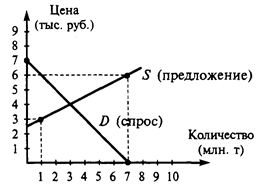Патент Великобританії
Бібліографія [54] АПАРАТУРА ДЛЯ ІНДУКЦІЙНОГО НАГРІВАННЯ ПЛОСКОГО МАТЕРІАЛУ [11] Патент № 2271701. Дата видачі патенту 20.04.1994 [22] Дата подачі заявки 13.10.1993 [21] Заявки № 93211035 [72] Винахідник Ганс Вернер [71] Власник патенту Інкорпорєйт Німеччина МК НО5В6/40 б) в цій частині патенту викладені аналіз стану техніки даної галузі, аналіз передумови створення патенту і вживаються такі стереотипні фрази:
в) в цій частині патенту - мета винаходу - вживаються такі стереотипні фрази:
г) повний опис патенту - це викладення патенту в деталях. Якщо в патенті є ілюстрації, то обов'язково їх описують і розшифровують цифри, які позначені на кресленні. Цифри розташовують в зростаючій послідовності. В цій частині вживаються такі стереотипні фрази:
д) патентна формула - самостійна частина патенту, переклад якої є особий вид технічного перекладу - З юридичної точки зору патентна формула - головна частина патенту, в якій формулюються всі нові признаки даного винаходу, які відрізняють його від вже відомих винаходів в даній галузі техніки. В цій частині патенту вживаються такі стереотипні фрази:
Як видно із прикладів опис патентів США і Великобританії суттєво відрізняються і тому потребують різного підходу при перекладі. Британські патенти зберегли архаїчну патентну форму, складні граматичні форми і довгі речення без пунктуації. Наявність складних прислівників, таких як: "hitherto" - до цього часу; "thereof - чиї, великої кількості зворотів, а також складних речень викликає труднощі при перекладі. Патенти США викладають сутність питання простіше і перекладаються легше британських патентів, але деякі архаїчні форми збереглися.
Питання для самоконтролю: 1. Що таке патент? 2. Яке призначення патенту? 3. Яка структура патенту?
Контрольні завдання для самостійної роботи № 23 1. Зробіть переклад патенту рідною мовою. PATENT SPECIFICATION GROWN COPYRIGHT 1968 INT. CL.:—B 60 T 5/00 IMPROVEMENTS IN OR RELATING TO MOTOR VEHICLE BRAKES This invention relates to improvements in or relating to hydraulically actuated motor vehicle brakes. The use of the brakes generates heat which not only reduces the life of the brake linings but the brake shoes become hot and the heat from the brake Shoes is transmitted to the rubber caps placed between the brake shoes and the ends of the pistons of the hydraulic shoe expanding cylinder thus shortening the life of the caps. The object of the present invention is to provide cooling means for the brake shoes and linings thereof. According to this invention one or more air blowers are provided and the outlet or outlets therefrom is or are connected to openings in the mounting plates for the brake shoes so that air is blown into the brake drums, the openings in the mounting plates being preferably opposite the hydraulic shoe expanding cylinders. The invention will now be more particularly described with reference to the accompanying drawing which shows a plan of a chassis of a motor vehicle constructed according to this invention. Like letters indicate like parts on the drawing. In one method of carrying out this invention an air blower is mounted at a convenient point on the chassis of the vehicle and is driven mechanically from the propeller shaft of the vehicle or other part of the transmission or by an electric motor which operates when the engine of the vehicle is switched on. The outlet from the blower is connected by flexible piping to openings in the mounting plates for the brake shoes. The openings are preferably located opposite the hydraulic cylinders provided for expanding the brake shoes so that air from the blower impinges first on the hydraulic cylinders on entering the interior of the brake drums.
the brake pedal of the vehicle is depressed to operate the brakes. In an alternative arrangement shown in the drawing a blower A is provided for each brake assembly. This enables smaller blowers to be used and reduces the length of the flexible piping B necessary as the blowers A can be mounted on the vehicle chassis C near to the respective mounting plates D of the brake assemblies. With the arrangement described air is blown into the interior of the brake drums E of the vehicle, either continuously when the engine is switched on, or the vehicle in motion, or when the brake pedal is depressed to "operate the brakes and has a cooling effect on the brake assemblies and prevents them from becoming overheated thus lengthening the working life of the brake linings and the caps on the hydraulic cylinders. The air escaping from the brake drums also helps to cool the tyres of the vehicle and increase their safety and- working life. What I claim is: A motor vehicle having hydraulically actuated brakes and in which one or more air blowers are provided, driven either mechanically from the transmission or electrically, and the outlet or outlets there from is or are connected to openings in the mounting plates for the brake shoes so that air is blown into the brake drums, the openings in the mounting plates for the brake shoes being preferably opposite the hydraulic shoe expanding cylinders.
|

 If preferred the blower may be arranged to operate only when the brake pedal is depressed by providing a switch in the circuit of the blower motor, the switch being closed to energize the motor when
If preferred the blower may be arranged to operate only when the brake pedal is depressed by providing a switch in the circuit of the blower motor, the switch being closed to energize the motor when


